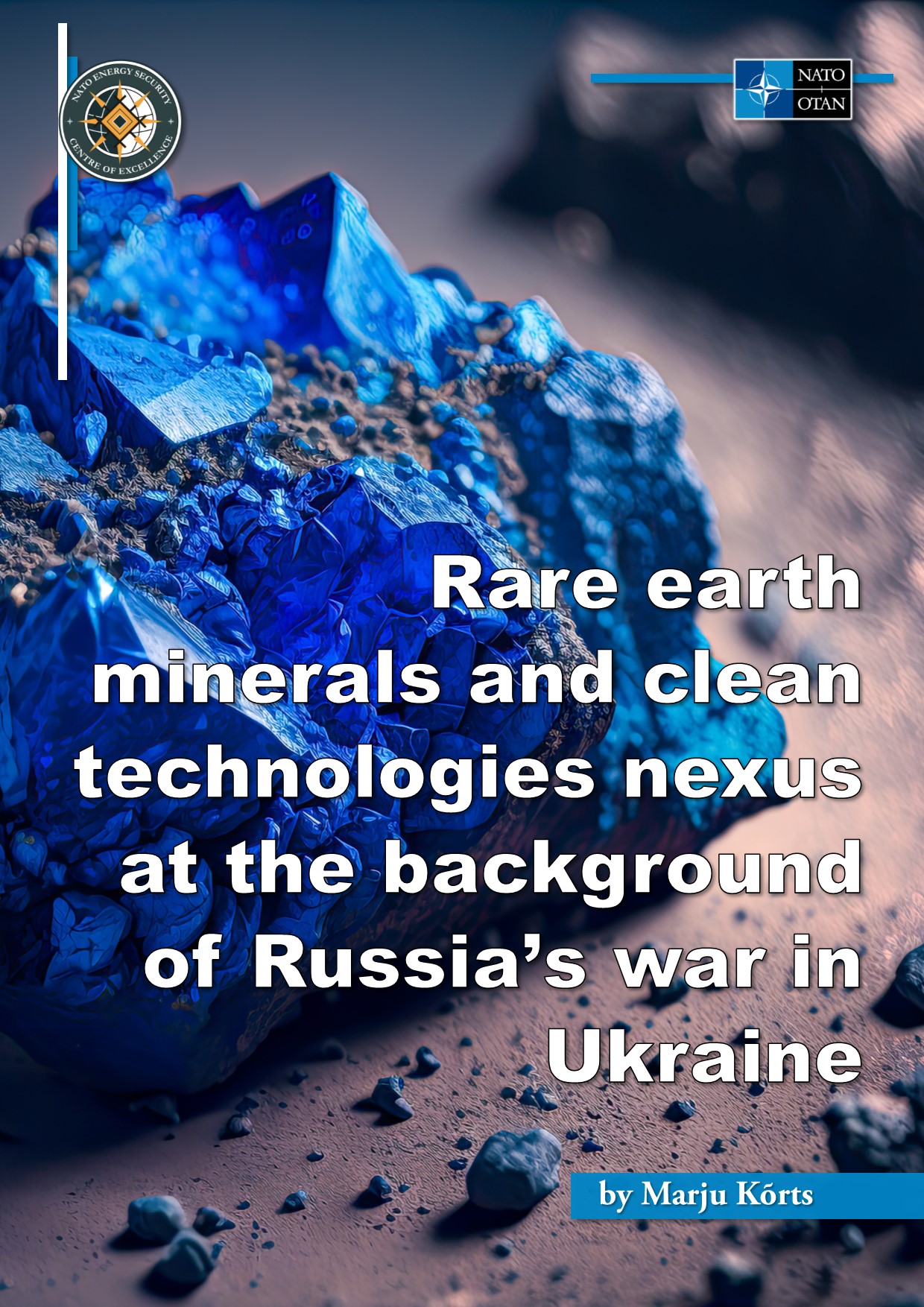Is A New Cold War Emerging Over Rare Earth Minerals?

Table of Contents
The Strategic Importance of Rare Earth Minerals
Rare earth elements (REEs), a group of 17 chemically similar elements, are indispensable for modern technology. Their unique magnetic, luminescent, and catalytic properties make them essential components in a wide range of high-tech applications.
Critical Role in Technology
The demand for REEs is soaring, driven by the rapid expansion of renewable energy technologies and the increasing prevalence of consumer electronics. Their importance is undeniable:
- Smartphones and Consumer Electronics: REEs are crucial for the production of screens, magnets, and other components in smartphones, laptops, and other consumer devices.
- Electric Vehicles (EVs): The powerful magnets in EV motors rely heavily on REEs like neodymium and dysprosium. The growing adoption of EVs is dramatically increasing the demand for these minerals.
- Wind Turbines: REEs are essential for the powerful generators that convert wind energy into electricity. The global push for renewable energy is further driving up REE demand.
- Military Technology: REEs play a critical role in the development of advanced military technologies, including guided missiles, radar systems, and sonar equipment. This aspect adds a significant geopolitical dimension to the competition.
The unique properties of REEs, such as their high magnetic strength, luminescence, and catalytic activity, make them irreplaceable in these and many other critical applications. The growing demand driven by technological advancements and the global transition to renewable energy ensures that the strategic importance of these rare earth minerals will only continue to grow.
China's Dominance in Rare Earth Mining and Processing
China currently holds a near-monopoly in the global rare earth mineral market, controlling a significant portion of mining, processing, and refining. This dominance has profound implications for global supply chains and geopolitical stability.
China's Control of the REE Market
China's control is not merely about production volume; it extends to the entire value chain. This gives them significant leverage in the global market.
- Production Statistics: China accounts for over 60% of global REE production, dwarfing other producers.
- Geopolitical Implications: This dominance allows China to influence the price and availability of REEs, creating potential vulnerabilities for countries heavily reliant on these resources.
- Geopolitical Leverage: China's control over REEs has been viewed by some as a potential tool for geopolitical leverage, impacting international relations and trade negotiations.
This situation highlights the risks associated with relying on a single source for such critical materials, leading to significant efforts by other nations to diversify their REE supply chains.
Diversification Efforts and Geopolitical Rivalries
Recognizing the vulnerabilities created by China's dominance, many countries are actively pursuing strategies to diversify their rare earth mineral sourcing and reduce their reliance on China. This effort, however, faces substantial challenges.
Efforts to Reduce Dependence on China
The United States, the European Union, and other nations are investing heavily in:
- Government Initiatives: Numerous government programs are funding REE exploration and development, aiming to establish domestic production capacity.
- Private Sector Investments: Private companies are also investing in new mining and processing technologies, as well as in the exploration of new REE deposits globally.
- Geopolitical Implications: The race to diversify REE sourcing is escalating geopolitical rivalries, leading to increased competition and strategic alliances among nations.
However, establishing alternative supply chains is complex and costly. It requires significant investment in exploration, infrastructure development, and the establishment of sophisticated processing facilities. Furthermore, environmental regulations and concerns regarding sustainable mining practices add another layer of complexity.
Environmental Concerns and Sustainable Mining Practices
The extraction and processing of rare earth minerals are not without environmental consequences. Traditional methods often lead to significant environmental damage.
The Environmental Impact of REE Extraction
Traditional REE extraction methods are known to cause:
- Land Degradation: Mining activities can lead to significant land degradation, habitat loss, and soil erosion.
- Water Pollution: The processing of REEs generates large volumes of wastewater containing heavy metals and other toxic substances.
- Carbon Emissions: The energy-intensive nature of REE extraction and processing contributes significantly to greenhouse gas emissions.
However, progress is being made towards more sustainable and environmentally friendly REE mining techniques:
- Improved Processing Technologies: New technologies aim to reduce water consumption, minimize waste generation, and lower carbon emissions.
- Responsible Sourcing: Emphasis is being placed on responsible sourcing and ethical mining practices to minimize the environmental and social impact of REE extraction.
- Green Technologies: The development of green technologies is crucial for reducing the environmental footprint associated with REE mining and processing.
Conclusion
The growing geopolitical significance of rare earth minerals is undeniable. The uneven distribution and control of these vital resources create a volatile situation with the potential for conflict. China's dominance in the REE market presents significant challenges to global supply chain security, driving nations to invest heavily in diversification efforts. However, these efforts are not without their own complexities, including substantial financial investments and environmental concerns. The path forward requires a multifaceted approach that includes international cooperation, the development of sustainable mining practices, and the diversification of supply chains to mitigate risks and prevent the escalation of tensions. The future of technology and global stability may depend on how we address the challenges surrounding rare earth minerals. Let's work together to foster a more secure and sustainable future for this crucial resource.

Featured Posts
-
 Europos Krepsinio Cempionatas J Jocyte Stiprina Lietuvos Rinktine
May 17, 2025
Europos Krepsinio Cempionatas J Jocyte Stiprina Lietuvos Rinktine
May 17, 2025 -
 Fortnite Item Shop Update What Went Wrong
May 17, 2025
Fortnite Item Shop Update What Went Wrong
May 17, 2025 -
 Giants Vs Mariners Injury Report For April 4 6 Series Rip City Radio 620
May 17, 2025
Giants Vs Mariners Injury Report For April 4 6 Series Rip City Radio 620
May 17, 2025 -
 Tracy Morgan Latest News Rumors And Updates
May 17, 2025
Tracy Morgan Latest News Rumors And Updates
May 17, 2025 -
 Paysandu Vs Bahia Resumen Del Encuentro Y Goles 0 1
May 17, 2025
Paysandu Vs Bahia Resumen Del Encuentro Y Goles 0 1
May 17, 2025
